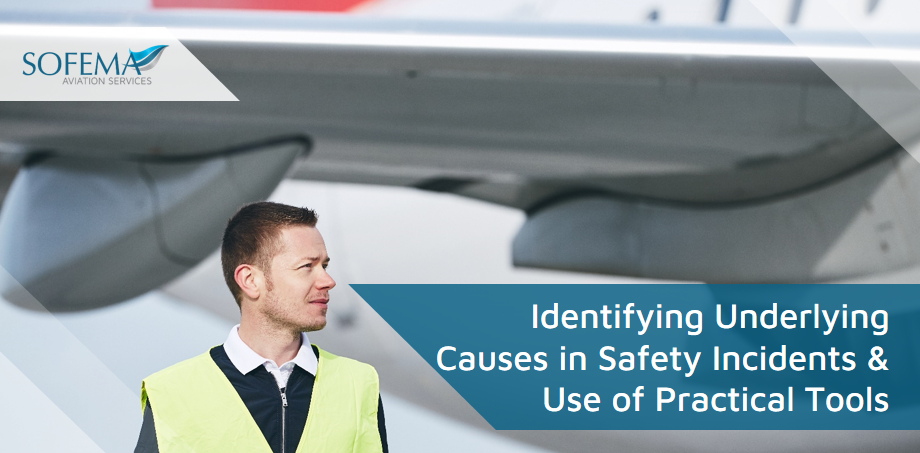Sofema Aviation Services (SAS) www.sassofia.com considers a number of techniques suitable for identifying underlying causes in safety incidents, focusing on practical tools and methods relevant to design organizations
Introduction
For identifying the underlying causes of safety incidents, we should focus on techniques that effectively uncover root causes and inform risk control and mitigation strategies. Consider the following:
Root Cause Analysis (RCA)
- Cause-and-effect diagrams (Ishikawa/Fishbone): This tool helps visually map out all possible causes of an issue, enabling teams to systematically analyze various factors, such as materials, processes, equipment, and human factors.
- Five Whys Technique: This simple method involves asking “why” repeatedly (typically five times) to peel away the layers of symptoms and uncover the fundamental cause.
- Failure Mode and Effects Analysis (FMEA): In a design organization, FMEA can be adapted to review design specifications and operational steps to proactively identify where failures could occur and their potential impact.
Fault Tree Analysis (FTA)
- FTA is highly suitable for complex systems in a design organization.
- FTA systematically breaks down potential fault pathways by analyzing conditions that must be present for the failure to occur.
- Provides a clear, visual method for pinpointing vulnerabilities in design processes or component interactions.
Human Factors Analysis and Classification System (HFACS)
- HFACS categorizes human errors into four levels:
- Unsafe acts,
- Preconditions for unsafe acts,
- Unsafe supervision and
- Organizational influences.
- In a design organization, HFACS can clarify whether human factors, such as inadequate training or decision errors, contributed to the incident.
Risk Control and Mitigation Strategies in EASA Part 21J Design Organizations
- Under EASA Part 21J, design organizations must demonstrate effective risk management and safety oversight.
>> Integrate robust risk control and mitigation strategies into every stage of the design process.
Hazard Identification and Safety Risk Assessment
- Safety Case Development: By preparing a safety case that outlines all identified hazards, design organizations can continuously monitor these risks and their controls, establishing a comprehensive risk control framework.
- Risk Matrix and Prioritization: A risk matrix helps to categorize hazards based on their likelihood and severity, prioritizing controls for high-risk areas, which informs resource allocation and mitigation strategies.
Design Assurance and Verification Controls
- Safety Integrity Levels (SILs): SILs establish performance criteria for safety-critical systems and components.
- Technical Reviews and Audits: Regular design reviews and internal audits are essential for confirming adherence to risk control measures.
Safety Management System (SMS) Implementation
- Safety Data Monitoring and Analysis: Use safety performance indicators (SPIs) to measure the effectiveness of risk controls.
- Continuous Improvement Cycle: An effective SMS fosters a continuous improvement mindset, where regular reviews, incident analysis, and safety feedback loops drive risk reduction efforts across design processes.
Next Steps
Follow this link to our Library to find & download related documents for Free.
For more information, visit the following training course: EASA Part 21 Subpart J Safety Management System Implementation – 2 Days or contact us at team@sassofia.com.
Tags:
Safety Management System SMS, SAS blogs, Human Factors Analysis and Classification System (HFACS), Risk Control, Fault Tree Analysis (FTA), mitigation strategies, Root Cause Analysis (RCA), design organizations, EASA Part 21J, Identifying Underlying Causes, Safety Incidents, Practical Tools, Methods





